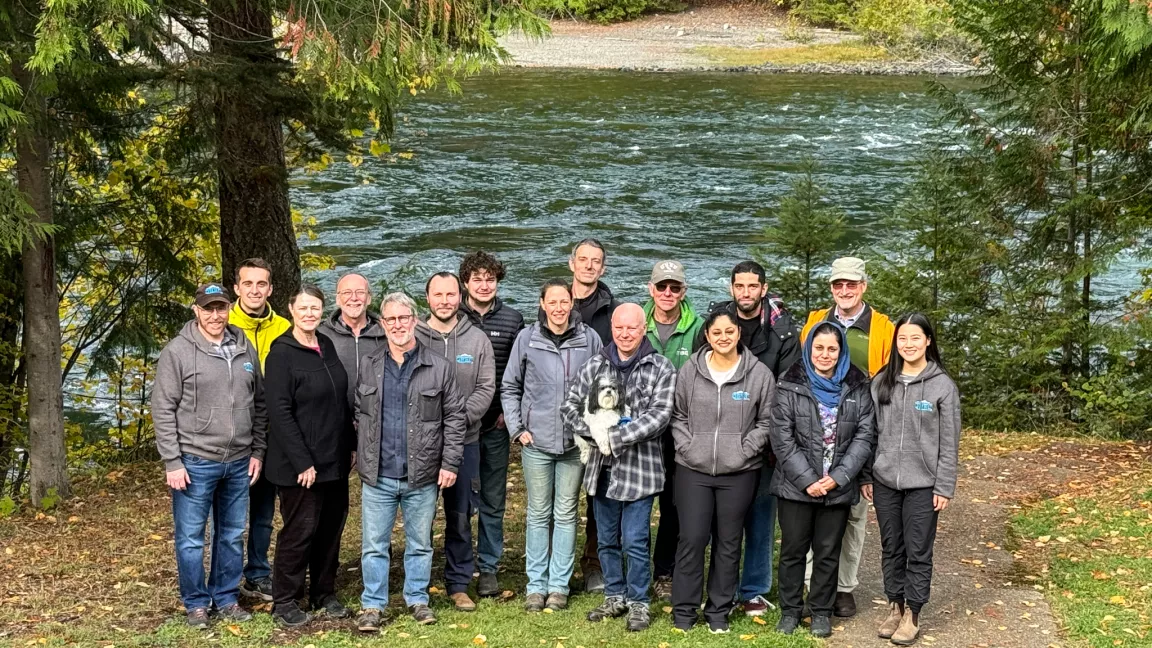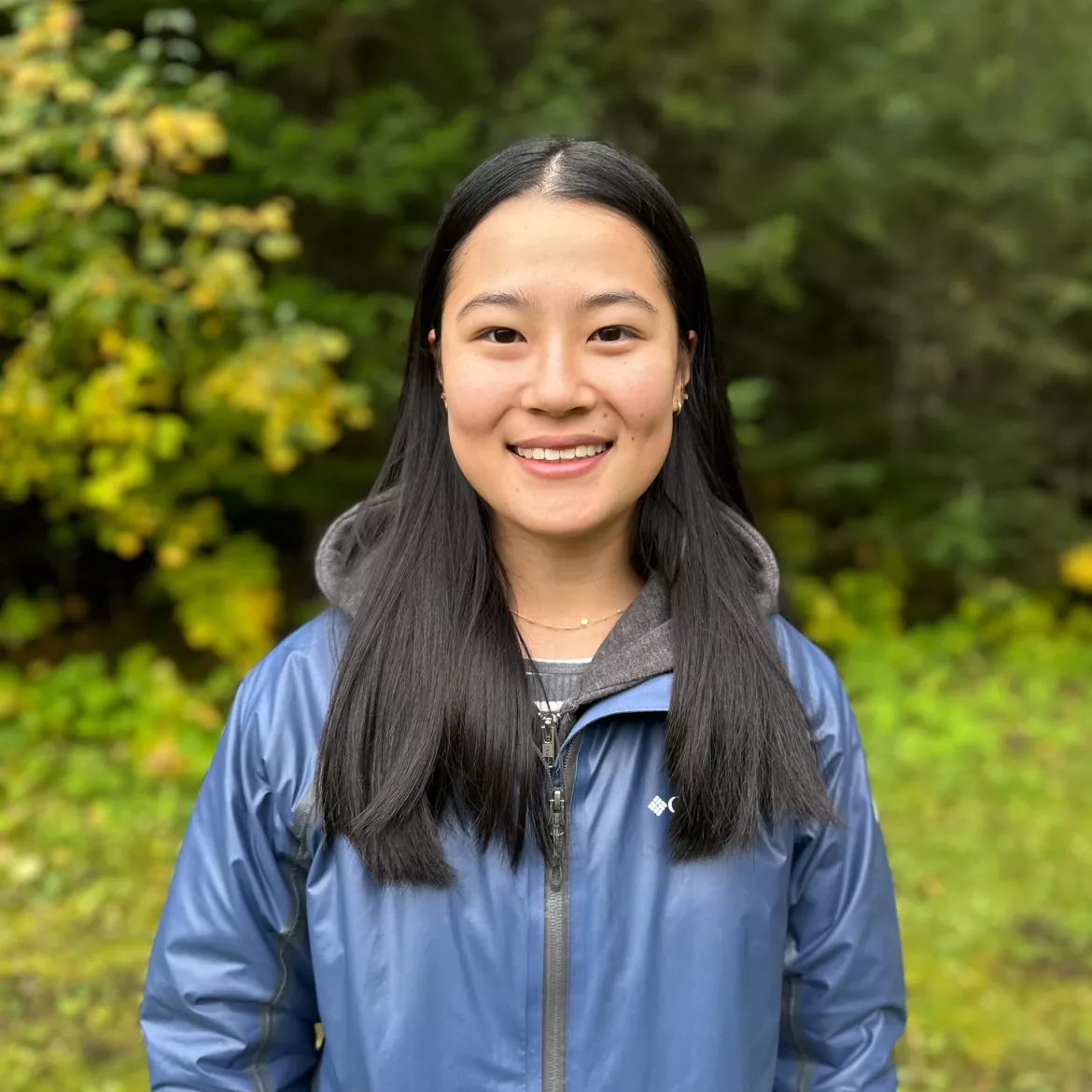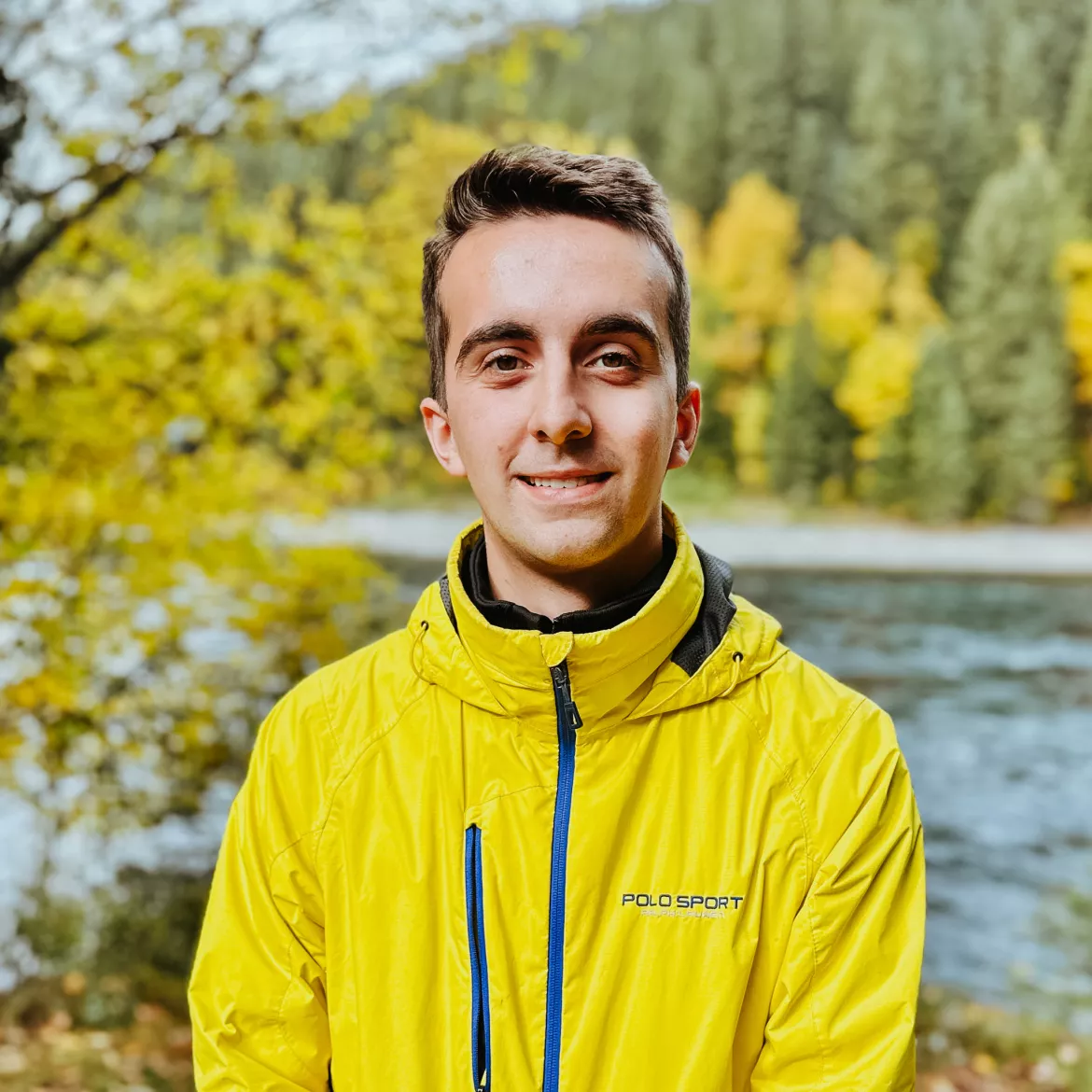Finding keys to salmon resiliency through research
Sustainable fish populations depend on resilient ecosystems. With climate change, habitat loss and other environmental pressures posing significant threats to both fish stocks and their habitats, researchers at UNBC’s Quesnel River Research Centre (QRRC) are working to understand the impacts of those pressures on salmon and develop strategies to preserve salmon species for future generations.

Likely, B.C. – Researchers studying the impacts of climate change, wildfire and human activity on salmon habitats and ecosystems in the Quesnel watershed provided an overview of projects underway for area residents at a packed open house at UNBC’s Quesnel River Research Centre (QRRC) in Likely, B.C. earlier this month.
The team of researchers led by UNBC Department of Geography, Earth and Environmental Sciences (GEES) Professor Dr. Ellen Petticrew and QRRC Manager Dr. Jason Raine recently secured one of the largest competitive grants in University of Northern British Columbia history – $5 million from the British Columbia Salmon Restoration and Innovation Fund (BCSRIF) – to support several ongoing research projects in partnership with the Upper Fraser Fisheries Conservation Alliance.

Natural Resources and Environmental Studies (NRES) Master of Science (MSc) graduate student Celina Ruan highlighted one project looking at the effects of climate change and wildfire contamination on the early development of chinook salmon in the Quesnel River watershed.
“Specifically, we’re looking at two factors: one is increasing stream water temperatures, and the second one is wildfire contamination,” says Ruan.
(Shown in photo at left, Ruan and the other researchers had project posters on display and answered questions from residents before and after the open house presentations.)
“When there’s wildfires, ash and sediment can flow into the riverbeds and that contains PAHs, polycyclic aromatic hydrocarbons, which may affect egg development.”

GEES Post-doctoral Fellow Dr. Smriti Batoye is also involved in the project, which is being supervised by Raine, Environmental Science Professor Dr. Phil Owens and Fisheries and Oceans Canada scientist Dr. Daniel Selbie.
Batoye, shown in photo at right, is living year-round at QRRC to carry out the research and explains further, “We are going to study three species of salmon – chinook, coho and sockeye – and how these sediments are going to affect their vision, their gene expressions and their survival rate."
All three species are listed as either threatened or endangered and NRES MSc student James Rankin is working under the supervision of Owens and GEES Assistant Professor Dr. Faran Ali to determine how sediment erosion, deposition and transport impacts salmon spawning reaches in the Horsefly River.

“We’re interested in how the sediment dynamics within the watershed impact those habitats,” says Rankin. “And how nutrients and contaminants associated with sediment move throughout the system and end up in Quesnel Lake, which is another important fish nursery lake.”
(Shown in photo at left, Rankin is standing along the shoreline of the Quesnel River.)
While this project focuses on the Quesnel watershed, researchers expect the insights gained to be relevant to other large lake systems in the Pacific Northwest.
“Salmon provide a key source of marine-derived nutrients for the downstream nursery lake, supporting young salmon, but also forests and the riparian zones of the Quesnel River watershed,” says Petticrew, the Research Lead. “These Interior ‘hotspots’ support black and grizzly bear populations who consume the returning fish and further distribute those marine nutrients on the landscape. The life cycle of salmon inextricably connects conditions in the ocean with those in the Interior, integrating marine, freshwater and terrestrial ecology.”
Attendees at the open house had the opportunity to see some of the hatchery infrastructure improvements supported by the BCSRIF funding – upgrades to the power supply and groundwater wells, additional broodstock holding tanks and incubation room improvements – that are allowing QRRC to raise Chinook salmon. The species has been struggling with recent population declines due to the 2019 Big Bar Slide and other natural and human-caused stressors on stocks.
Other members of the research team are studying Quesnel Lake’s wind field and water temperatures to enable a three-dimensional model of lake mixing. These water movements regulate the distribution of nutrients necessary for lower levels of the food web that provide food sources for salmonids and other resident fish.

Through his research at QRRC, NRES graduate student Kyle DaSilva, shown in photo at right, is pursuing a Master of Science degree in Biology, under the supervision of Petticrew and Selbie. DaSilva’s research is focusing on biological production in Quesnel Lake in an area where a mound of earth left behind by a glacier deposit, known as a sill, creates an upwelling in the water.
“The premise of my project is that upwelling is bringing nutrients from low in the lake up to warmer, shallower and brighter areas of the water column, which is causing an increase in the population of algae,” he says. “That increase in the population of algae is then leading to more zooplankton surviving in the water and zooplankton are important to salmon because when they reach the fry stage, they predominantly eat zooplankton.”
DaSilva has introduced some methodology changes to the project – expanding the sill area being studied and shifting focus to the euphotic zone in the water column, where photosynthesis happens.
“The idea of this project is to see if the Quesnel Lake sill is a ‘hotspot’ for life in Quesnel Lake.”
The BCSRIF funding will also see the construction of a new facility on-site at QRRC, providing two new laboratories and space for teaching and community outreach.
As a hub for extended field and laboratory-based projects, this ongoing research at QRRC is working to foster solutions and mobilize knowledge on some of the most pressing salmon-related challenges.